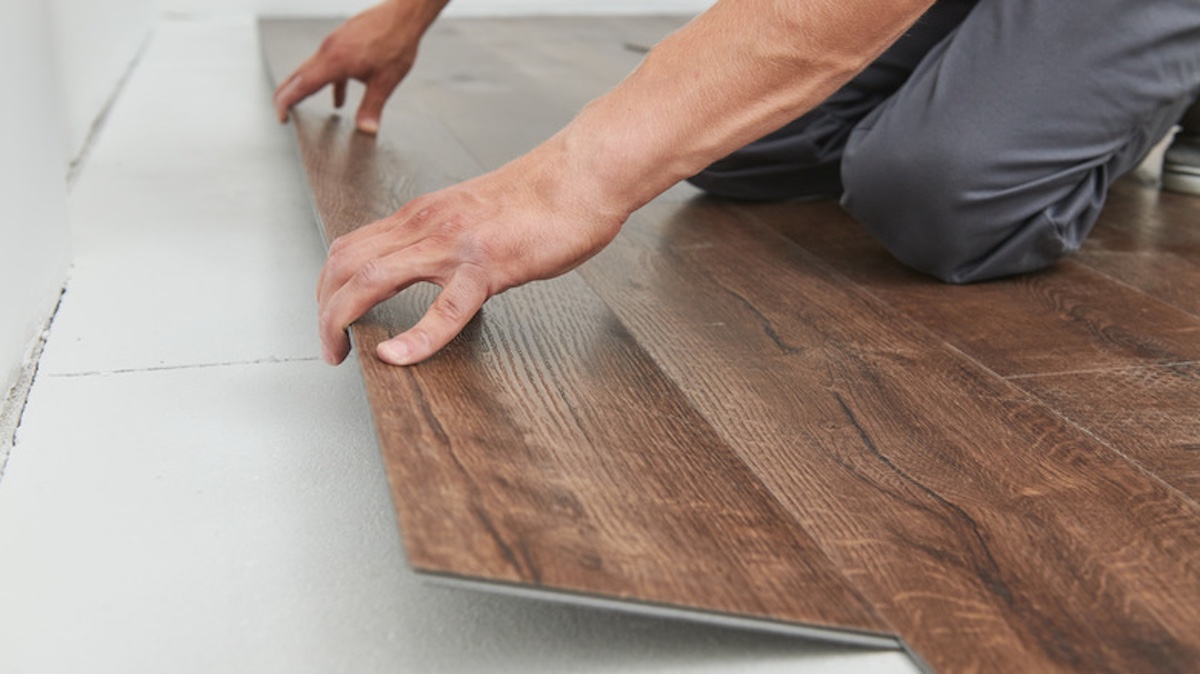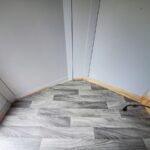Vinyl plank flooring has become an increasingly popular flooring choice in recent years thanks to its durability, water-resistance, and affordable price point. If you’re looking to install new cabinets, you may be wondering if you can place them directly on top of vinyl plank flooring. The answer is yes – with the right preparation and installation techniques, cabinets can be installed safely on this type of flooring.
Table of Contents
Benefits of Using Vinyl Plank Flooring
Before delving into the installation process, it helps to understand the key benefits that make vinyl plank a suitable flooring surface for cabinet installation:
- Durability: Vinyl plank flooring is highly durable and scratch-resistant, able to withstand heavy furniture placement and foot traffic. This makes it an ideal base for cabinets.
- Water-resistance: Vinyl plank flooring is waterproof and resistant to spills and leaks, protecting the flooring underneath your cabinets.
- Affordability: Vinyl plank flooring costs $2-5 per square foot installed, making it more affordable than alternatives like hardwood or tile.
- Easy installation: Vinyl plank flooring is lightweight and simple to install, making cabinet placement easier after the flooring is laid.
Preparing the Subfloor
Before installing vinyl plank flooring, it’s critical that you prepare the subfloor according to manufacturer specifications. The subfloor surface must be:
- Clean: Free from debris, nails, staples, and old adhesive.
- Smooth/flat: Ensure the surface is flat to 3/16 inches within a 10-foot radius.
- Structurally sound: No cracks or voids – repair if needed.
Choosing Quality Vinyl Plank Flooring
Not all vinyl plank flooring is built the same. For cabinet installation, it’s important to choose flooring rated for commercial use with an AC rating of at least AC3. This denotes higher durability and strength. Consider the underlayment as well:
- Foam underlayment offers comfort and sound insulation.
- Cork underlayment provides the highest moisture protection.
Note: Vinyl plank flooring with an AC3 rating is suitable for high durability and cabinet installation.
How to Install Cabinets on Vinyl Plank Flooring
- Acclimate the vinyl plank flooring: Lay the flooring in the area for 48 hours to adjust to temperature and humidity.
- Lay the flooring: Stagger end seams in adjacent rows by at least 6 inches for stability.
- Select the cabinet location: Map out the exact footprint with tape, ensuring planks are adhered in this area.
- Prepare the cabinets: Ensure cabinets are plumb, level, and square.
- Set the cabinets: Place cabinets carefully along the outline without dragging them.
- Secure the cabinets: Fasten cabinets to wall studs using screws, connecting adjacent boxes for stability.
- Seal along edges: Caulk edges to prevent moisture ingress.
Maintaining Cabinets and Flooring
To keep your cabinets and vinyl plank flooring in good condition:
- Use furniture pads and area rugs under heavy furniture legs.
- Immediately wipe up spills near cabinet edges.
- Sweep and mop floors weekly using vinyl-approved cleaners.
- Avoid excessive water/moisture under cabinets.
Conclusion
Vinyl plank flooring offers an affordable, durable, and attractive base for cabinet installation. By preparing the subfloor, selecting quality vinyl rated AC3 or above, and securely fastening the cabinets, you can achieve a beautiful and functional result.
FAQ
Q1: Can I install heavy cabinets on vinyl plank flooring?
A: Yes, with proper installation techniques and a stable subfloor, vinyl plank flooring can support heavy cabinets without issues.
Q2: Will cabinets damage vinyl plank flooring over time?
A: If cabinets are properly installed and fastened, and moisture is controlled, vinyl plank flooring will hold up well under cabinets.
Q3: Is it necessary to use a moisture barrier under vinyl plank flooring for cabinets?
A: Yes, in areas with moisture risk, a moisture barrier or underlayment is recommended to prevent potential damage and mold growth.

Chirag Sachdeva is a seasoned digital marketing expert with over 15 years of experience spanning digital strategy, content management, and SEO. Chirag is the founder of Digifly Technology, where he empowers businesses to grow through innovative digital solutions. With a deep understanding of content strategy and market trends.





